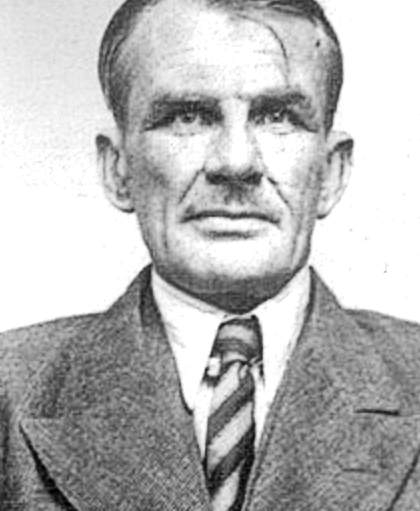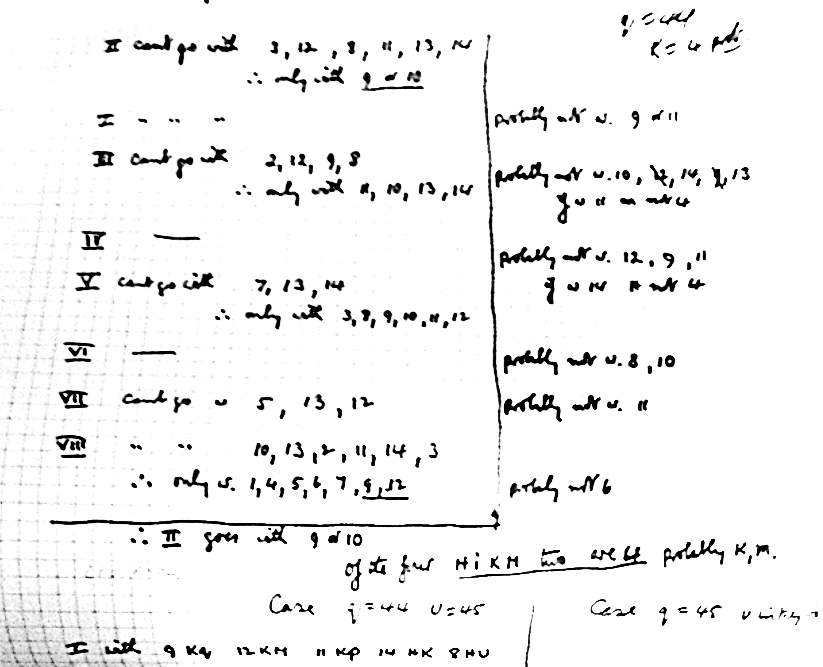Richard Hayes: The Irish Spy Who Broke the Nazi Gortz Cipher & Changed WWII
By day, Dr. Richard Hayes was an unassuming Irish librarian. Behind closed doors, however, he was a WWII codebreaker tracking a Nazi spy in one of the most thrilling episodes in Ireland's history.
Ireland - officially ‘neutral’ in WWII - was a cauldron of spies. The Americans and British were working with Ireland’s G2 military intelligence. KGB agents sailed offshore to drop weapons for the rebel Irish Republican Army (IRA). Meanwhile, a dozen Nazi officers parachuted onto the emerald isle for underground talks with the IRA, including Hermann Görtz, a former Luftwaffe pilot and a lawyer who’d been jailed in England in the 1930s for spying on Royal Air Force bases.

In 1940, Görtz landed in County Meath, near Dublin, with plans to join up with IRA paramilitaries and head across the border to sabotage British-controlled Northern Ireland. Görtz, dropped in the dark of night, swam across the river Boyne then walked into the heart of the Wicklow mountains to the home of a Nazi sympathizer.
"The brand new social experience where you activate your gaming skills as you train like a spy."
- TimeOut
Take on thrilling, high-energy espionage challenges across different game zones.

Görtz narrowly escaped capture during a visit to an IRA contact, businessman Stephen Carroll-Held. The Irish authorities seized Görtz’s top-secret code instructions, however, which he’d left behind along with his uniform, $20,000, and Plan Kathleen which was a blueprint for the Nazis to invade Northern Ireland with IRA help.

Dublin’s genius codebreaker
Mild-mannered librarian Richard Hayes, a graduate of the prestigious Trinity College Dublin, was tasked with breaking the fiendishly difficult Nazi cipher.
While Hayes worked, Görtz remained in hiding for 18 months and nerves began to fray. Ireland’s military spies had a keen interest in breaking the code and arresting Görtz. So did British spies, who dropped by Hayes’ office regularly for a debrief. America hadn’t officially entered WWII yet, but US spies from the Office of Strategic Services - the precursor to the CIA - were working out of a base at the US Embassy in Dublin.
While the massive manhunt was underway, Hayes formed his team of codebreakers while America’s best minds and Britain’s Bletchley Park codebreakers also worked around the clock to break the so-called ‘Görtz Cipher’.

G2 Military Intelligence
Hayes and Colonel Dan Bryan, then head of G2, Ireland's Military Intelligence, were also leading Ireland’s counterintelligence effort to decode wireless messages covertly transmitted via Morse code from the German Embassy in Dublin.
The Germans were using a secret radio transmitter, which posed a diplomatic dilemma in neutral Ireland. Should Dublin inform London what Britain’s German enemies were up to? There was no easy answer, but Ireland decided the Nazis posed a threat and that Ireland should work with the western allies.
The capture of Nazi spy Hermann Görtz
Between February 1940 and December 1943, 12 German spies were smuggled into Ireland and captured. Görtz was the prize, however, a seasoned officer born in 1890 who’d evaded capture on a tiny island despite all odds.

Görtz’s diary
Görtz is suspected of handing over more than $130,000 to IRA rebels while collecting intelligence about Irish military and coastal defenses.
Irish authorities finally received a tip-off about Görtz’s whereabouts in late 1941. The Nazi spy had been moving between a succession of homes belonging to sympathizers and Irish lovers. When Ireland’s police service, the Gardai, burst into a house in a Dublin suburb they found Görtz seated calmly in an armchair, smoking a cigarette. He was belligerent when police handcuffed him, however, shouting: “You are arresting the best friend Ireland has. Your government knows why I'm here!'
Police seized Görtz’s diary which outlined his plan to escape capture and a list of his Irish contacts. The game was up.
“Dr. Hayes was eager to meet the new arrival,” author Marc McMenamin wrote in Codebreaker: The untold story of Richard Hayes. “What followed was a game of cat and mouse between the cunning Nazi spy and the genius Irish librarian.”

Breaking a German spy
It would be 1943 before Irish intelligence officers gathered at the Dublin HQ to celebrate. Hayes, a family man from west Limerick, had broken a seemingly impenetrable Nazi code - a cipher that frustrated the greatest minds of America’s codebreakers and Britain’s Bletchley Park which was at the heart of the UK’s wartime cryptography.
Hayes, who studied languages at Trinity College, personally led the Görtz interrogation in German. During a visit to the Nazi’s cell, he noticed Görtz was writing a play and keeping a diary to pass the time. Did the documents contain a clue or keyword that would help Hayes break the Görtz Cipher? The German prisoner brought the papers everywhere - even to exercise in the yard - so Hayes was in a quandary.

Stripping off
Luckily, Görtz complained about a possible ulcer. Hayes happily arranged for his prisoner to see a doctor who’d take X-rays, a lengthy process in which Görtz would need to strip off. Hayes rifled through the Nazi spy’s trousers while he was seeing the physician but Görtz’s pockets were empty. Hayes rushed back to the prison cell and found the documents stashed among Görtz’s clothing. He pleaded with the doctor to stall so Hayes could finish making copies.
The doctor advised Hayes that Görtz had been X-rayed in every position known to medical science. Görtz was almost blue with cold before he was allowed to dress and return to the prison. While the papers didn’t reveal clues about the cipher, they did spell out Görtz’s detailed plan to escape, which the Irish guards put a stop to by moving him to another cell. Hayes doubled his resolve to break the cipher.
The Irish spy who changed WWII
The breakthrough finally came when Görtz left fragments of burned papers in his cell, according to McMenamin’s book, Codebreaker. Hayes gathered the remains and had them treated with chemicals. He discovered the fragments contained 126 letters and deduced that the keyword was ‘Cathleen Ni Houlihan’.
The discovery filled Hayes with dread - someone outside of the prison was likely receiving messages through an insertion in The Irish Times newspaper. Nonetheless, Hayes and his team were on their way to breaking the Nazi code.
After lengthy bureaucratic delays - too lengthy for UK tastes - British intelligence were informed of the breakthrough and the secret services carried on sharing intelligence until the end of the war in 1945. Hayes' role in the affair wouldn’t be revealed until McMenamin shared his research with Irish broadcaster RTE in 2017.
In addition to the Görtz cipher, Hayes also broke a complex microdot enciphering system which had baffled the American OSS, as well as an enciphering system used by the dreaded Sicherheitsdienst, the intelligence section of the SS, according to a report in The Irish Times. “The breaking of the latter code was instrumental in the Allied victory at the Battle of the Bulge.”
Few spies or codebreakers can claim to have altered the course of WWII but Hayes is one of them, an Irish genius who helped bring down the German war machine using his knack for languages and intricate knowledge of cryptography.
SPYSCAPE+

Join now to get True Spies episodes early and ad-free every week, plus subscriber-only Debriefs and Q&As to bring you closer to your favorite spies and stories from the show. You’ll also get our exclusive series The Razumov Files and The Great James Bond Car Robbery!


Gadgets & Gifts
Explore a world of secrets together. Navigate through interactive exhibits and missions to discover your spy roles.
Your Spy Skills
We all have valuable spy skills - your mission is to discover yours. See if you have what it takes to be a secret agent, with our authentic spy skills evaluation* developed by a former Head of Training at British Intelligence. It's FREE so share & compare with friends now!
* Find more information about the scientific methods behind the evaluation here.


Stay Connected
Follow us for the latest
TIKTOK
INSTAGRAM
X
FACEBOOK
YOUTUBE